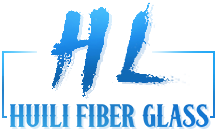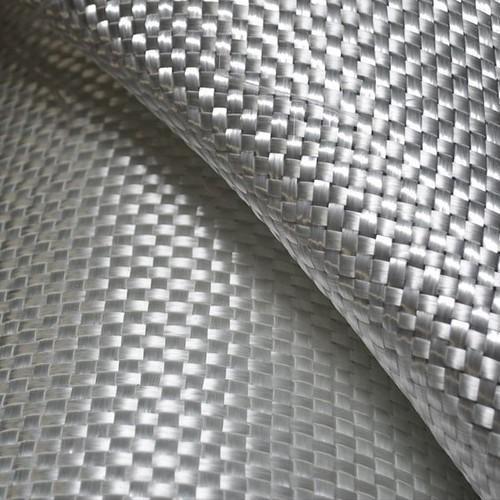Fiberglass woven roving is a high-performance reinforcement fabric made from continuous glass fiber strands woven into a robust, crisscross pattern. This material is widely utilized in various industries due to its excellent mechanical properties, durability, and versatility. Here’s an in-depth look at the primary applications and benefits of fiberglass woven roving.
Applications of Fiberglass Woven Roving
Marine Industry
Boat and Shipbuilding: Fiberglass woven roving is extensively used in the marine industry for constructing hulls, decks, and other structural components of boats and ships. Its resistance to water, corrosion, and salt makes it ideal for marine environments. The material provides the necessary strength and rigidity while keeping the structures lightweight, which is crucial for buoyancy and fuel efficiency.
Repairs: It’s also used for repairing damaged parts of boats and ships. The material’s ease of handling and compatibility with various resins make it a preferred choice for patching and reinforcing existing structures.
E-Glass 600g Fiberglass Woven Roving
Automotive Industry
Body Panels and Structural Components: In the automotive sector, fiberglass woven roving is used to manufacture body panels, hoods, and other structural components. Its high strength-to-weight ratio contributes to improved vehicle performance and fuel efficiency.
Aftermarket and Custom Parts: Custom car builders and aftermarket manufacturers use fiberglass woven roving to create custom body kits, spoilers, and interior components. The material’s adaptability allows for the creation of complex shapes and designs.
Construction Industry
Roofing and Wall Panels: Fiberglass woven roving is employed in the construction industry to produce roofing panels, wall panels, and other structural elements. Its resistance to weathering, moisture, and chemical corrosion enhances the longevity and durability of buildings.
Reinforcement for Concrete Structures: The material is also used to reinforce concrete structures, providing additional strength and resistance to cracking. This is particularly beneficial in seismic zones and areas with extreme weather conditions.
Wind Energy
Wind Turbine Blades: The renewable energy sector uses fiberglass woven roving for manufacturing wind turbine blades. The material’s high tensile strength and stiffness, combined with its lightweight properties, are crucial for the efficient operation of wind turbines. The durability and fatigue resistance of fiberglass woven roving ensure the long-term reliability of wind turbine blades, which are subjected to continuous stress and environmental exposure.
E-Glass 400g Fiberglass Woven Roving
Aerospace Industry
Aircraft Components: In the aerospace industry, fiberglass woven roving is used to fabricate various aircraft components, including fuselage sections, wing structures, and interior parts. The material’s excellent mechanical properties contribute to the overall safety and performance of aircraft while minimizing weight, which is critical for fuel efficiency and range.
Sports and Recreation
Sporting Goods: Fiberglass woven roving is used to manufacture sporting goods such as surfboards, skis, snowboards, and fishing rods. The material’s strength, flexibility, and resistance to environmental factors enhance the performance and durability of these products.
Industrial Applications
Pipes and Tanks: The material is used to manufacture pipes and tanks for chemical storage and transport. Its chemical resistance and structural integrity make it suitable for handling aggressive substances and operating under harsh conditions.
Electrical Insulation: Fiberglass woven roving is used in electrical applications for insulation and protection. It provides excellent dielectric properties and resistance to heat, ensuring the safety and efficiency of electrical systems.
Benefits of Fiberglass Woven Roving
High Strength-to-Weight Ratio: One of the primary advantages of fiberglass woven roving is its exceptional strength-to-weight ratio. This property allows the creation of lightweight yet strong structures, which is critical in industries like automotive, aerospace, and marine.
Corrosion and Chemical Resistance: Fiberglass woven roving is inherently resistant to corrosion and chemicals, making it suitable for use in harsh environments. This property ensures the longevity and reliability of structures and components made from this material.
Versatility and Adaptability: The material can be easily molded into complex shapes and designs, providing significant flexibility in manufacturing. It is compatible with various resins, including polyester, epoxy, and vinyl ester, which enhances its adaptability to different applications.
Durability and Longevity: Fiberglass woven roving offers excellent durability, withstanding mechanical stress, environmental exposure, and wear and tear. This longevity translates into reduced maintenance costs and longer service life for the end products.
Cost-Effectiveness: Compared to other high-performance materials like carbon fiber, fiberglass woven roving is more cost-effective, making it a preferred choice for many applications where budget constraints are a consideration.
In conclusion, fiberglass woven roving is a versatile and valuable material used across various industries for its strength, durability, and adaptability. Its wide range of applications, from marine and automotive to construction and aerospace, highlights its importance in modern manufacturing and engineering.



